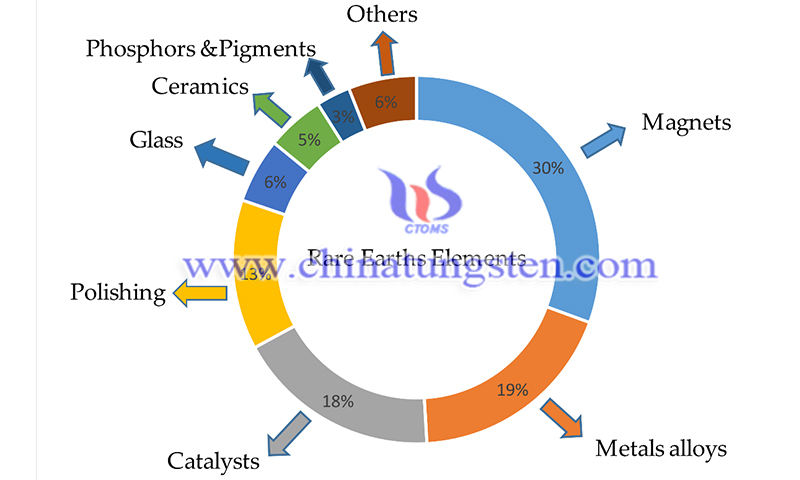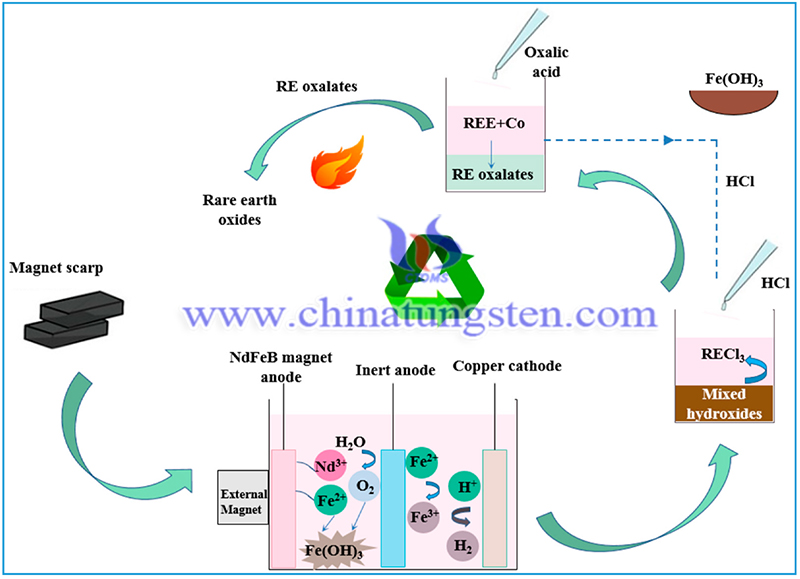Microbial Methods in Rare Earth Recovery
- Details
- Category: Tungsten's News
- Published on Wednesday, 22 June 2022 23:18
Rare-earth permanent magnets are essential in modern life, and it is crucial to research improved magnet production and rare earth recovery technologies to reduce dependence on scarce elements, and microbial methods are a green recycling technology.
Under certain conditions, microorganisms such as bacteria, algae, or fungi can take up rare earths into their cells and make them ferment. A €1 million project funded by the European Regional Development Fund (ERDF) - REEgain - is trying to demonstrate the feasibility of this process.

REEgain experts say they are working to find out which organisms can absorb rare earths and in what quantities. The experts also claim that the best candidates absorb about 75-80% of rare earths in solution.
In order to start the fermentation process in rare earth recovery, rare earths must first be present in e-waste in the form of a powder, which is then dissolved in nitric acid. Nitric acid is not harmless to the environment, but since it is a source of nitrogen for the organism in question and only a very small amount is used, there is no residue at the end of the process.
The microorganisms and nutrient solution are then added to the dissolved powder. By adjusting process parameters such as temperature, pH, or oxygen concentration in the nutrient solution, it is possible to control the growth of the organisms. The duration of the process depends on the organisms used: for bacteria, the fermentation lasts about 72 hours, for unicellular fungi it takes 3 to 5 days and for algae 2 to 3 weeks. Rare earths can then be removed from the microorganisms and at the end of the process, only the microorganisms and the biodegradable liquid remain in the fermentation process.
To further optimize this process, researchers at IMC Krems are also investigating co-culture: this involves combining two different types of organisms like a symbiosis. The goal is to grow photoautotrophic organisms (which need only light and carbon dioxide to grow) together with heterotrophic organisms (which feed on carbon). This is because photoautotrophic organisms (e.g. algae) can produce substances from carbon dioxide in the air that serves as a food source for heterotrophic organisms (e.g. bacteria). In microbial methods, different microorganisms absorb rare earths in different ways. It will take some time before the process can be used commercially. But the basic feasibility of the process now seems unquestionable.

From an industrial point of view, the mining of rare metals is very difficult. Ores must be extracted from dozens of kilograms of rock, purified, and transformed with chemicals that are often discarded in nature. Wastewater from rare earth mining, sometimes filled with radioactive waste, is dumped in nature causing contamination of waterways and groundwater, making microbial methods particularly important in the rare earth recovery.
- Rare Earth Manufacturer & Supplier, Chinatungsten Online: www.chinatungsten.com
- Tungsten News & Prices of China Tungsten Industry Association: www.ctia.com.cn
- Molybdenum News & Price: news.molybdenum.com.cn
- Tel.: 86 592 5129696; Fax: 86 592 5129797; Email: sales@chinatungsten.com



 sales@chinatungsten.com
sales@chinatungsten.com